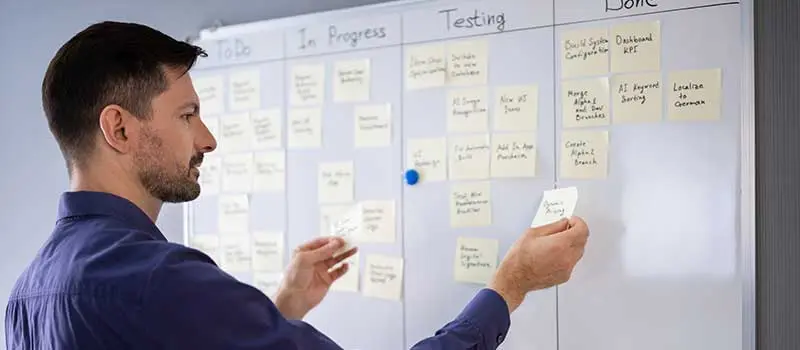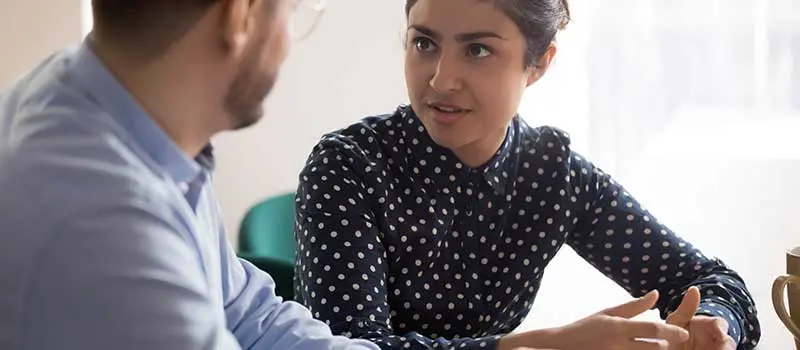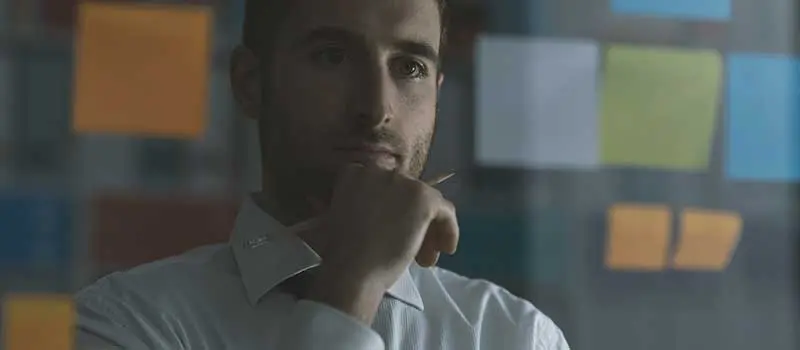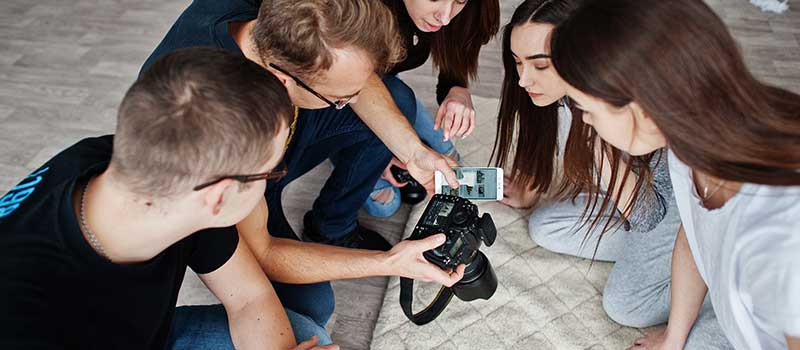Picture this. You’re working as a creative director leading a team of graphic designers, copywriters, photographers, and videographers.
It’s your creative direction, your unique way of narrating and communicating the brand vision that reaches the public.
Your creativity helps businesses succeed through the creative work you love to do.
For creatives with ambitions to lead, the creative director role is often seen as the benchmark of success.
Today, we will explore everything about the creative director role: what does a creative director do, the skills needed to become one, and the career path that’ll help you get to this position faster.
What Is A Creative Director?

A creative director manages the aesthetic, visual, and narrative aspects of creative projects, leads the creative team, and ensures that all creative assets convey the brand identity, vision, and message effectively.
Think of it as a manager who isn’t directly involved in the execution of the creative work but steers the creative ship through their ideas.
What Does A Creative Director Do?

Okay, so
What do creative directors do?
Do they design graphics?
Edit videos or write copy?
No, not exactly. They may be excellent graphic designers or editors in their own right, but creative directors don’t spend their time with technical execution but, as you might have guessed, creative direction.
In other words, they guide other creatives in their vision for the project.
They know how to convey a message in the form of art, so they grasp ideas from the stakeholders, add their own ideas to them, and communicate those ideas to their creative team.
The creative team produces the graphics, visuals, or stories that convey the message, while the creative director oversees the whole process.

Since it is a top-level managerial position, the job of creative directors involves more than just creative work. Here’s what they do on a daily basis:
Develop creative strategies and style guides for products, brands, or publications.
Choose the right designs, graphics, photographs, or aesthetics for each project and turn ideas, concepts, and messages into meaningful visuals.
Meet with clients and the marketing department, and manage budgets for projects.
Manage and oversee written and visual communication for public relations, digital marketing, social media, and other print and digital media.
Present work to clients, manage feedback and effectively communicate requirements with the creative department.
Manage, lead, and motivate the in-house team of creative professionals while ensuring the perfect work environment to cultivate creativity.
PRO Brand Strategy BluePrint
Build Brands Like A Pro Brand Strategist

Creative Director vs. Brand Strategist: What Is The Difference?

At first, creative director and brand strategist may sound like similar roles, but they are actually very different.
The roles of graphic design or brand design can lead to both the brand strategist or the creative director role later in your career.
Those who want to remain within the creative sphere in influence tend to choose the creative director path. Those who desire more influence on the overall brand direction, tend to choose the brand strategist path.
Brand strategists fully immerse themselves in almost every aspect of the brand, from framing the vision, mission, positioning, and message to the audience and competitor research, and the go-to-market strategy.

The brand strategist analyzes different marketing channels and growth opportunities and develops strategies to achieve brand awareness, adoption, and ultimately loyalty.
They decide how the brand wants to reach the target audience, and through which media, by researching market trends and consumer behavior.
Ultimately the creative director and brand strategist work hand-in-hand to strategist the best approach to connect with the audience and to execute the strategy in the most creative and effective way.
Explore Brand Strategy
Programs & Tools
Skills And Qualities Of A Successful Creative Director

Like other expert professionals, creative directors have a specialist skill set to excel in their role.
Mastering the skills required for the creative director position needs years of experience in other creative roles.
Most creative directors cut their teeth in junior, mid-weight, and senior positions across a variety of disciplines including graphic design, UX / UI Design, video production, art director, and copywriting to name a few.
But of course, knowing which skills you will need the most will help you get there faster.
These are the most important skills and qualities of a creative director:
Creativity

It’s obvious, but the first skill you’ll need is an eye for art and creativity.
Since you’ll be leading a team of photographers, designers, and other creative professionals, you also need to have a finger on the pulse of the latest design trends, illustrations, cinematographic techniques, and writing styles.
Your job is to take the strategy and bring it to life with your experience and expertise, and put it into execution.
Ultimately, the best creative directors learn their craft and make their mistakes through years of experience in their chosen creative path.
Communication Skills

Being creative is only one slice of the pie. There are many top creatives who lack the communication and interpersonal skills to articulate their ideas effectively.
It’s true that communication skills are critical for almost any leadership role, though communicating facts and figures are very different from communicating abstract creative ideas to creative team members.
Yet this is what creative directors must do at a high level to provide those creatives with the vision and guidance needed to deliver on-brief.
The communication skills of creative directors are utilized in both directions.
On one side communicating with creatives to deliver their creative vision on-brief, on the other communicating with clients and the business administration to understand the brief and present the work.
Leadership Skills

Managing a team of creative professionals is a lot different from managing any other team. Creative people need the freedom to explore and express their creativity, yet their work needs to be perfectly aligned with the vision and goal of the project.
Successful creative directors are masters at providing their designers with enough creative freedom to do their best work while using their experience to keep them on brief.
This is where the experience of the director takes center stage.
They understand creatives, how they work, what the creative team needs to produce their best work and they do what they can to provide this environment for them.
Experience

Most creative directors begin their careers as designers, photographers, or graphic artists.
Mastering one specific skill and having a solid understanding of other creative skills is a right of passage for becoming a successful creative director.
The bad news is, it is a pretty long journey.
But the good news is, the journey is worth it.
Since the position demands skills from the creative field and the managerial field, you’ll need years of experience, usually 5-10 years of work experience in a closely related field, to be effective at creative direction.
How To Become A Creative Director

Advancing to the role of creative director requires a deep understanding of the creative processes across various fields along with strong management skills.
But where do you start? Which career path is the best for you? Can you become a creative director without a degree?
Well, let’s explore in a bit more detail!
Step 1: Consider Getting A Degree

In order to develop a personal brand strategy for your clients you need to understand;
What you’re building and have a methodical process to develop every element.
Most independent brand strategists develop their processes and systems over years of experience though more recently, frameworks such as these have become available through online learning.
Whether you develop your own or learn from an experienced strategist, without a systemic process to develop your brands, you won’t have much to offer.
Step 2: Gain Professional Experience

Once you get a degree or gain the skills needed to do creative work, you can start looking for entry-level jobs such as junior roles, or internships.
Most mid-size businesses today have a creative team, but advertising agencies and media companies heavily rely on creative professionals.
For more rounded experience, roles in creative agencies provide better options though, of course, they’re also often more difficult to get your foot in the door.
It’s also worth noting that experience outweighs education in creative fields. All the degrees in the world are worth little without that creative spark, though the right education refines raw talent.
The average age of an employed creative director in the US is 40 years old, so be prepared to get that experience under your belt.
Step 3: Build A Strong Portfolio

Here’s a pro tip for you:
Right from day one, start focusing on building a solid portfolio. Your experience working with different types of projects will help you get hired faster; you’ll also find your job easier.
If you want to fast-track your journey, create a portfolio website as soon as you start working in the creative field and update it as you complete each project.
Thank me later.
For the role of creative director, a portfolio of your talents and past work is more important than a resume while marketing your skills and talent is just as important as your skills.
Step 4: Sharpen Your Skills And Gain Expertise

Creative directors are great visionaries, designers, photographers, web designers, and project managers. In-depth knowledge of each of these fields is necessary to become a successful creative director.
As you advance through your career, sharpen your core skills and seek opportunities to gain expertise in multiple departments.
You should be adept at handling multiple departments at once; it’ll make your
Step 5: Start Networking With Professionals

If there’s one thing that can assure you a great career, it is your professional network.
Start building meaningful connections with other creative professionals early in your career.
The benefits of networking are numerous:
Gain inspiration from other professionals,
Discover new techniques and trends,
Gain exposure to different expert perspectives
You may even be the first one to know about a new job opening, even before it goes public.
Never underestimate the power of networking, and never miss a chance to build a meaningful connection with a creative professional.
But how do you network with professionals when you’re just starting with your career?!
Well, the answer is LinkedIn, Instagram, Facebook groups, and Twitter to name a few.
Being an active member in workshops, conferences, and webinars will help you build meaningful connections faster.
Creative Director Salary Expectations

Of course, the salary depends on several factors such as your geographic location, experience, industry, and company size.
Management positions tend to command high salaries, and creative directors are senior managers with several years of experience.
You see where this is going, right?
Salary.com reports an average annual salary of $134k, while Glassdoor reports the same to be $126k per year.
While the bureau of labor statistics has art directors (the closest comparison) at $97k, creative director roles are generally quite well paid.
Over To You
A career as a creative director is one of the highest and senior-most positions creative professionals can aim for.
It takes years of work, consistent upskilling, and mastering a wide variety of creative, managerial, and soft skills to become an effective creative director.
Of course, there are no shortcuts, but if you plan your career path all the way up to this position now, you will find it easier to get there.
So, even if you are working as a junior graphic designer, think and plan ten years ahead. Note down the skills you have, the skills you’ll need, and the skills you want to focus on.
Creative directors are masters at visualizing the big picture; they’re experts at thinking from a broader perspective.
If you have those raw skills; use them to create your own vision of achieving the pinnacle of success in your creative career to that coveted creative director role.
On-Demand Digital Program
Brand Master Secrets
Make the transition from hired-gun to highly valued brand strategist in less than 30 days. The systems, frameworks and tools inside this comprehensive program are all you need to level up.







